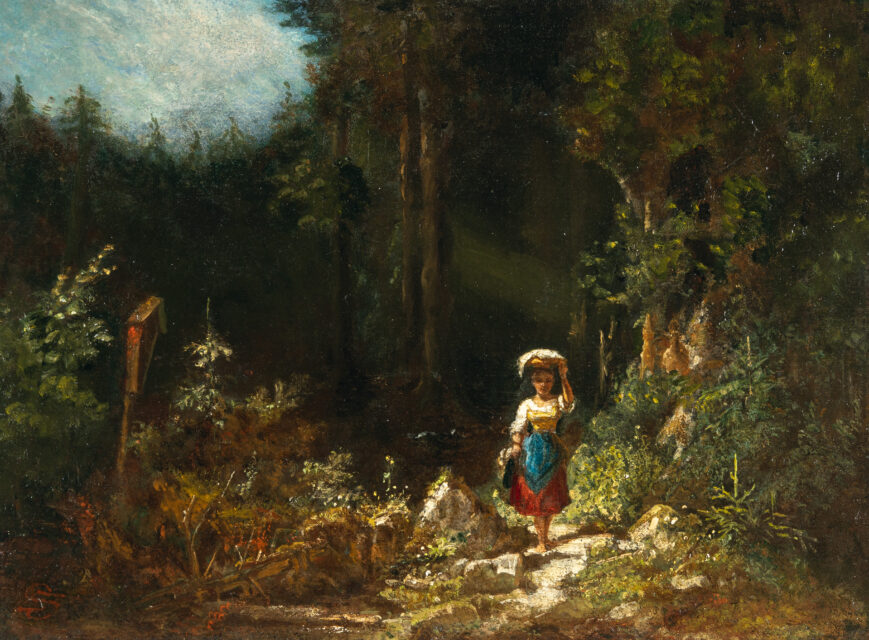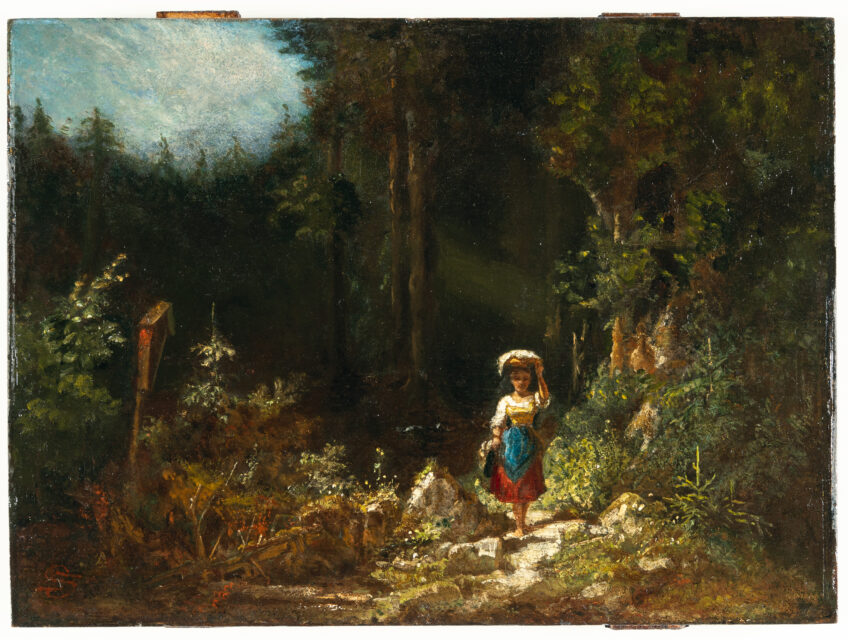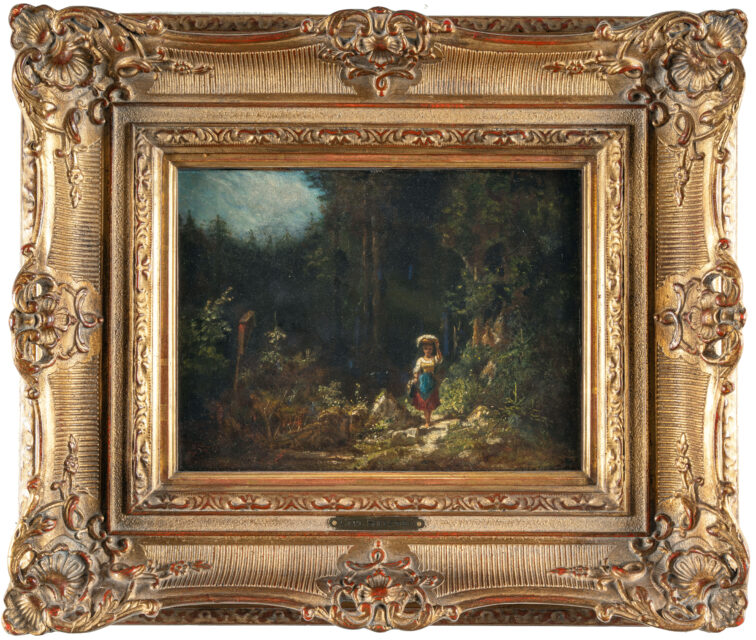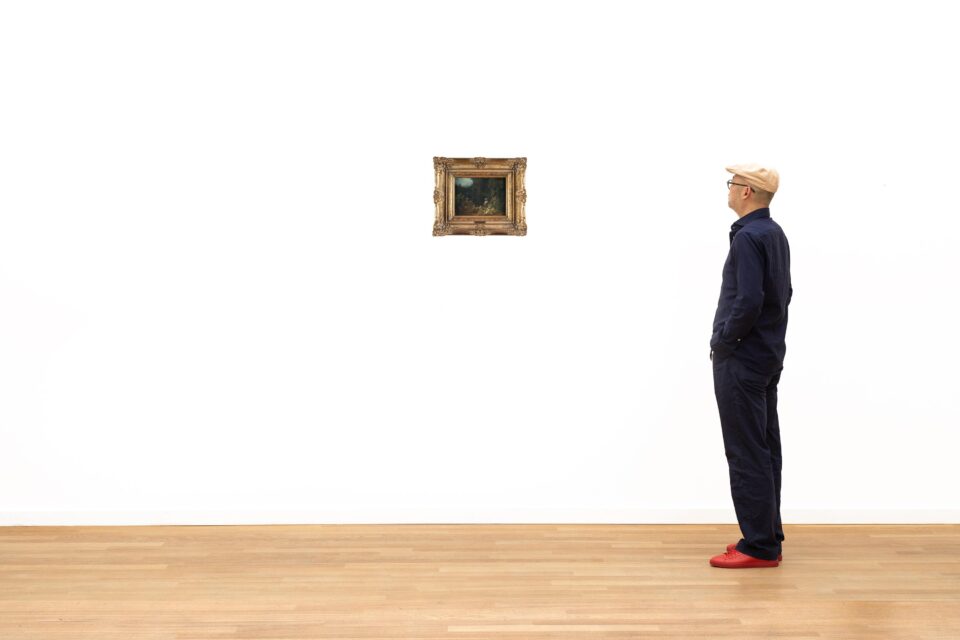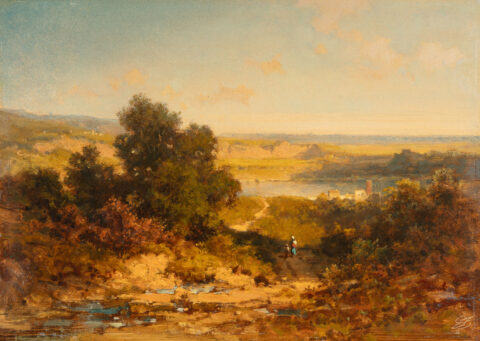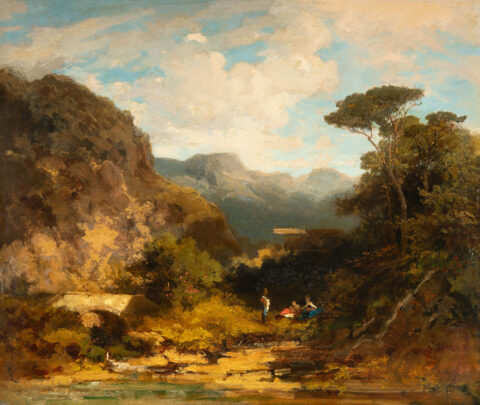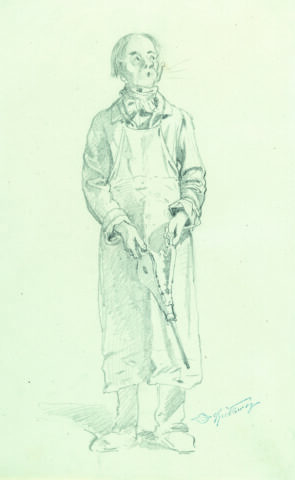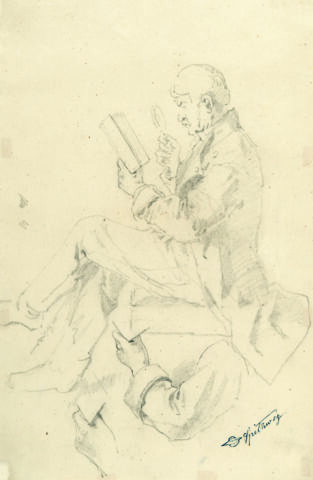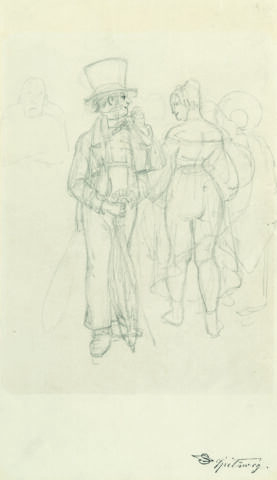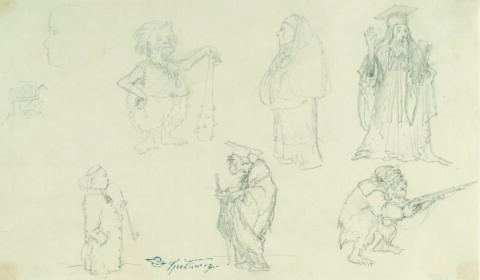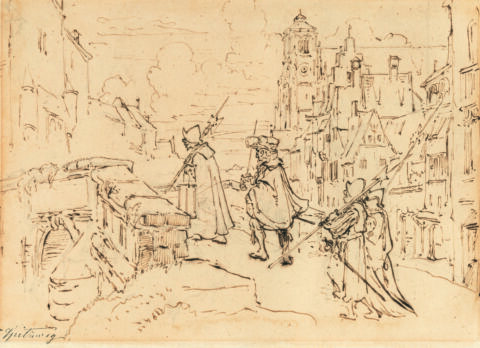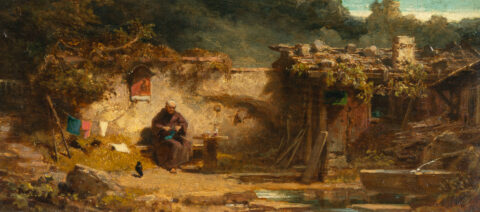
Girl in the forest (shadowy forest valley – dairymaid with head load)
Details
Roennefahrt 321; Wichmann 1434.
Literatur:
Günther Roennefahrt, Carl Spitzweg. Beschreibendes Verzeichnis seiner Gemälde, Ölstudien und Aquarelle, München 1960, S. 167, Kat.-Nr. 321, mit Abb.;
Siegfried Wichmann, Carl Spitzweg. Die Sennerin im Wald, Dokumentation, Starnberg-München, R.f.v.u.a.K. 1996, S. 12ff., Bay. Staatsbibliothek München, Inv.-Nr. 656 SW 89;
Siegfried Wichmann, Carl Spitzweg. Verzeichnis der Werke, Stuttgart 2002, S. 520, Kat.-Nr. 1434, mit farb. Abb (oben beschnitten).
Ausstellung:
Nationalgalerie, Berlin, 23. Sonderausstellung, Nov./Dez. 1886, Nr. 47, aus dem Besitz von Heinrich Bürkel, München, mit dem neuen Titel “Mädchen im Hohlweg”;
Hugo Helbing, Berlin, Spitzweg-Ausstellung, 20.2.-31.3.1927, Nr. 34 (als “Mädchen im Walde”), aus Leipziger Privatbesitz.
Provenienz:
Ludwig von Bürkel (1841–1903), München;
Artur Louran, Berlin;
Elsas, Berlin, Auktion, 12.12.1931, Los 47, aus Berliner Privatbesitz (Slg. Louran) mit Titel “Schattiges Waldtal” (falsche Maße);
Elsas, Berlin, Auktion, 6.2.1932, Los 92, aus gleichem Berliner Privatbesitz;
Neumeister, München, Auktion, 24.3.2010, Los 347;
Privatsammlung, Süddeutschland.
Descrizione
It is a characteristically charming scene, full of grace, in which Spitzweg’s two life themes, man and forest, are combined. As so often, Spitzweg depicts people in the forest, almost protectively wrapping themselves around the girl like a bell as she makes her barefoot way through the forest along a stony path past a shrine. The forest is dark, only a white-blue hole in the sky lets in a little light, but the girl is the only one shining brightly in the light – it comes from the front, from where the girl is going. Surrounded by lush vegetation that reflects the light, it is hard to imagine a more impressive staging of her appearance – the girl strides towards us, the viewer, holding a basket in the crook of her right arm so that she can still carry a bottle of wine (?) in her hand, while with her left hand she supports the full laundry basket that she is carrying on her head. She returns and brings us culinary delights, light and perhaps even more?
Spitzweg repeatedly depicted this motif of the girl returning along a stony path, sometimes accompanied by a goat, sometimes alone, then again in an encounter with a hunter who lets the opportunity to flirt pass – but it is always the self-assured, self-contained girl who radiates joie de vivre and youthful beauty in her bright colours. Again and again, it is the colour harmony of white blouse and golden yellow bodice, of blue apron and red skirt, in which Spitzweg’s women “appear” in the forest. It is certainly no exaggeration to assume that this “appearance” of Mrs Spitzweg’s ideal woman – it is always the beautiful, young woman in a dirndl that he depicts. Unlike Menzel, for example, he never depicted old women; he continued to include young women in his paintings into old age – even if it was only as two blue and red brushstrokes – as if to escape the passing of time. Spitzweg himself was never married, but as a young man he had courted a woman who died before a more permanent relationship could be formed. Spitzweg remained an ageing hag – a motif he talked about again and again – and realised his fantasies in painting.
Spitzweg tells of this in such a fragrant, loose style of painting that the picture begins to shimmer, the light jumps from sheet to sheet, setting the picture in motion. Since his stay in Paris and especially in Barbizon in 1851, Spitzweg has repeatedly tried out how colour freshness and intensity, colour tone and application, light and dark seem to find each other as if by magic in order to capture colour, mood and atmosphere. The painters from Barbizon – such as Narcisse Díaz de la Peña – inspired him again and again to such experiments, in which Spitzweg found his way to a pure painting that can rightly be described as “pre-impressionist”.
Dr Peter Prange
* Tutte le informazioni includono la commissione a carico dell'acquirente (27%) senza IVA e senza garanzia. Salvo errori.
** Tutte le informazioni più la commissione a carico dell'acquirente e l'IVA e senza garanzia. Salvo errori.
*** Con riserva: L'offerta è stata accettata al di sotto del limite. L'acquisizione dell'opera potrebbe essere ancora possibile nella nostra vendita post-asta.
R = Le opere d'arte regolarmente tassate
N = Opere d'arte soggette a tassazione differenziata e provenienti da un paese non UE
Non è consentita la riproduzione e la distribuzione privata o commerciale di tutte le illustrazioni delle opere esposte nell'archivio della mostra e dell'asta. Tutti i diritti riservati.


